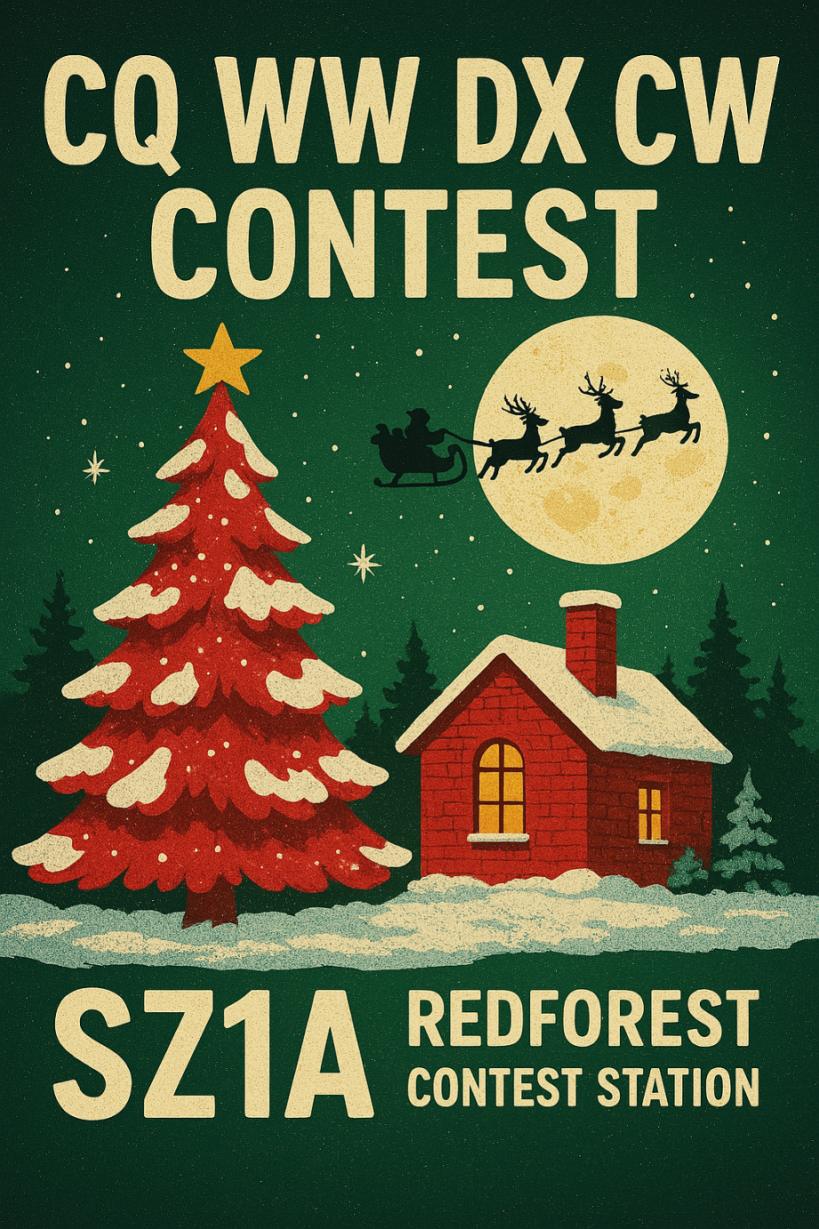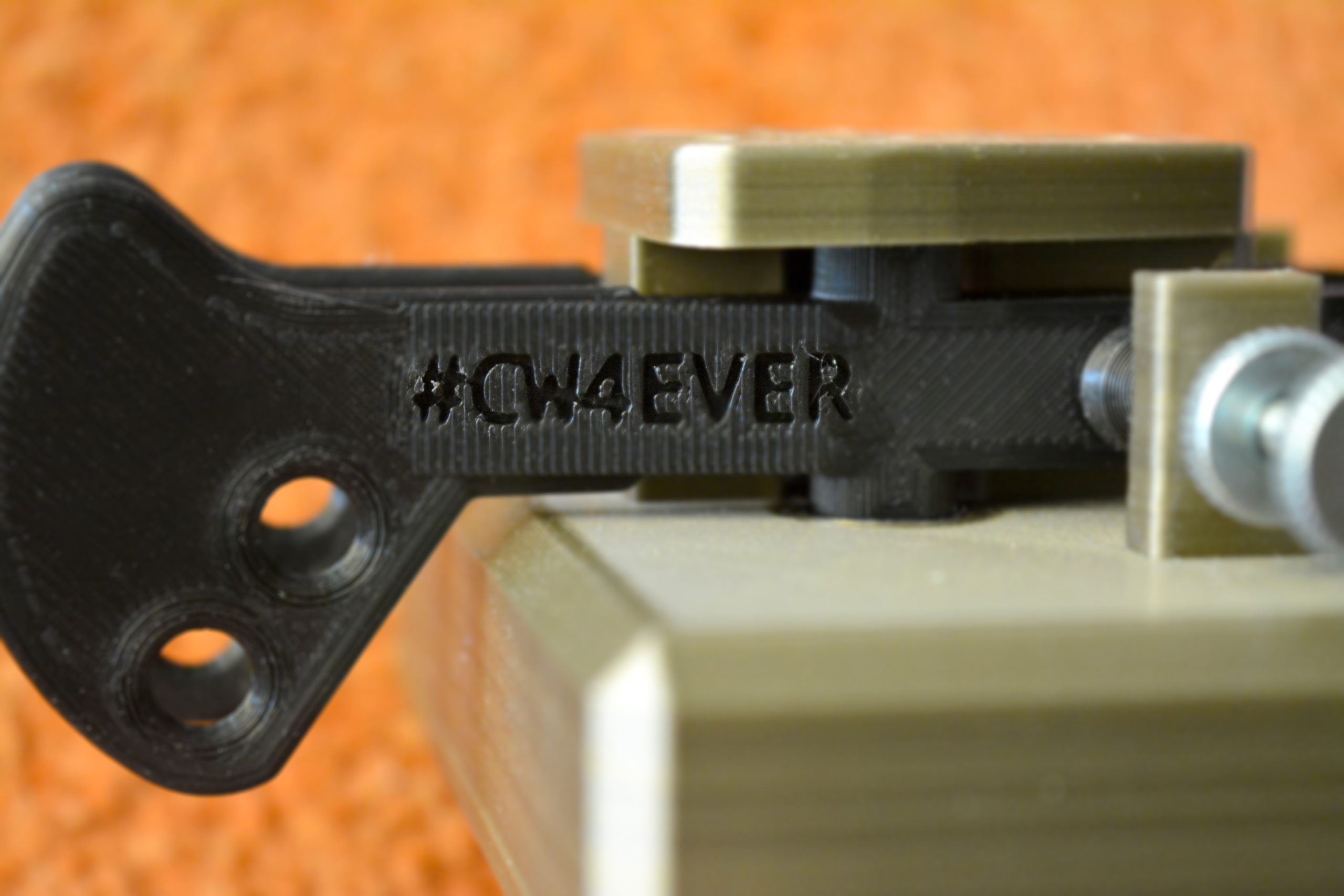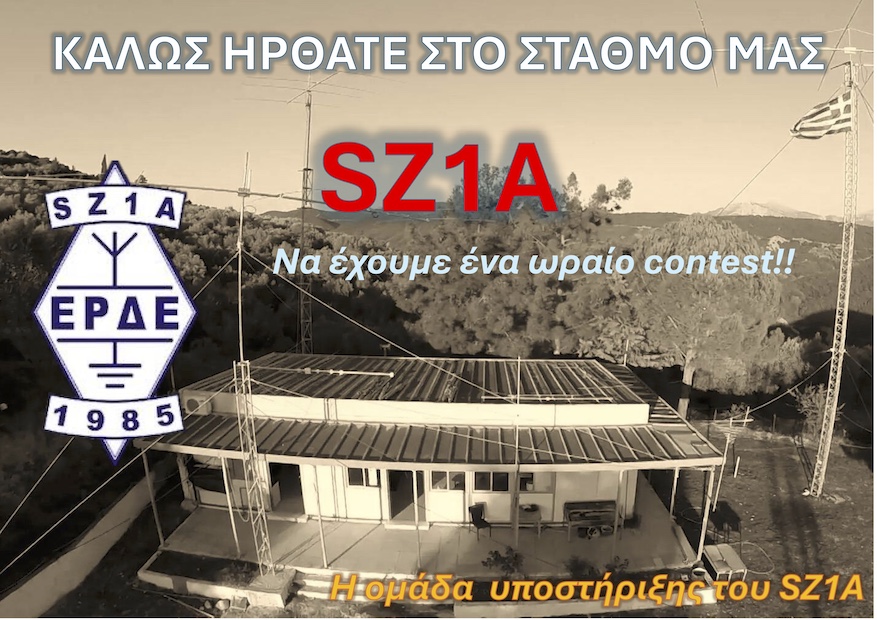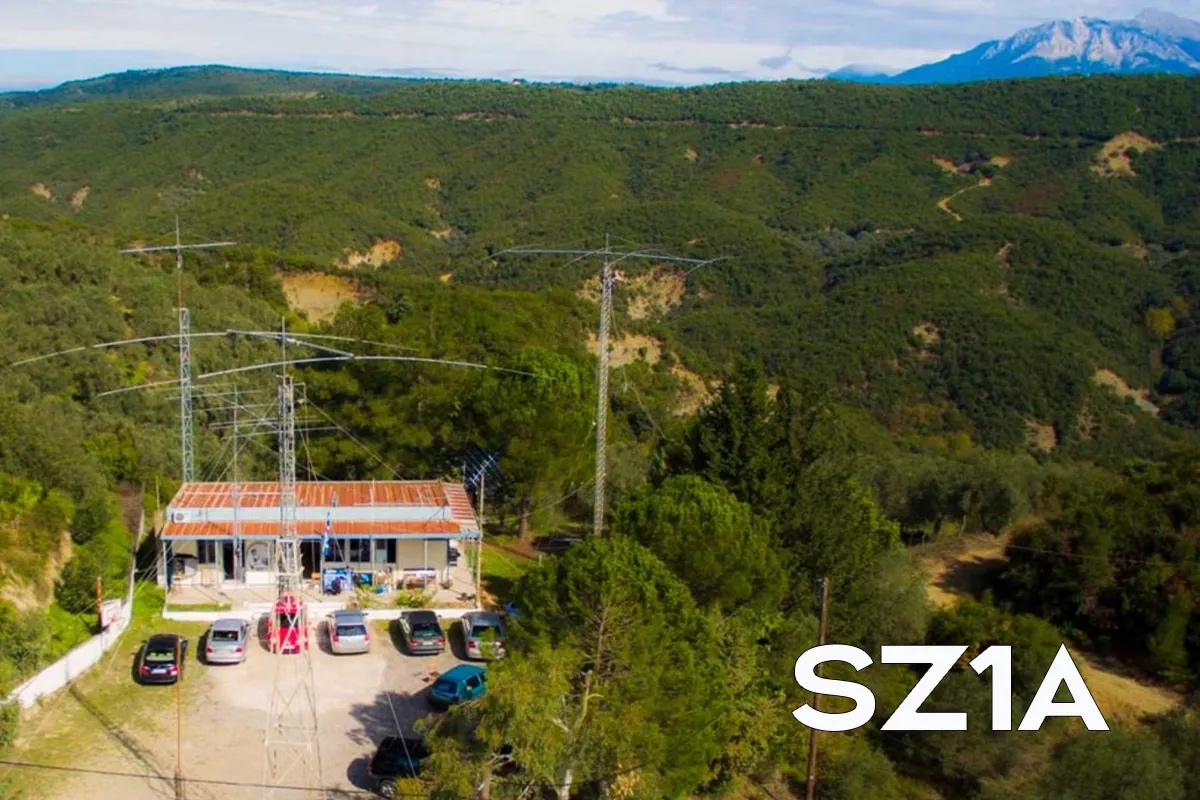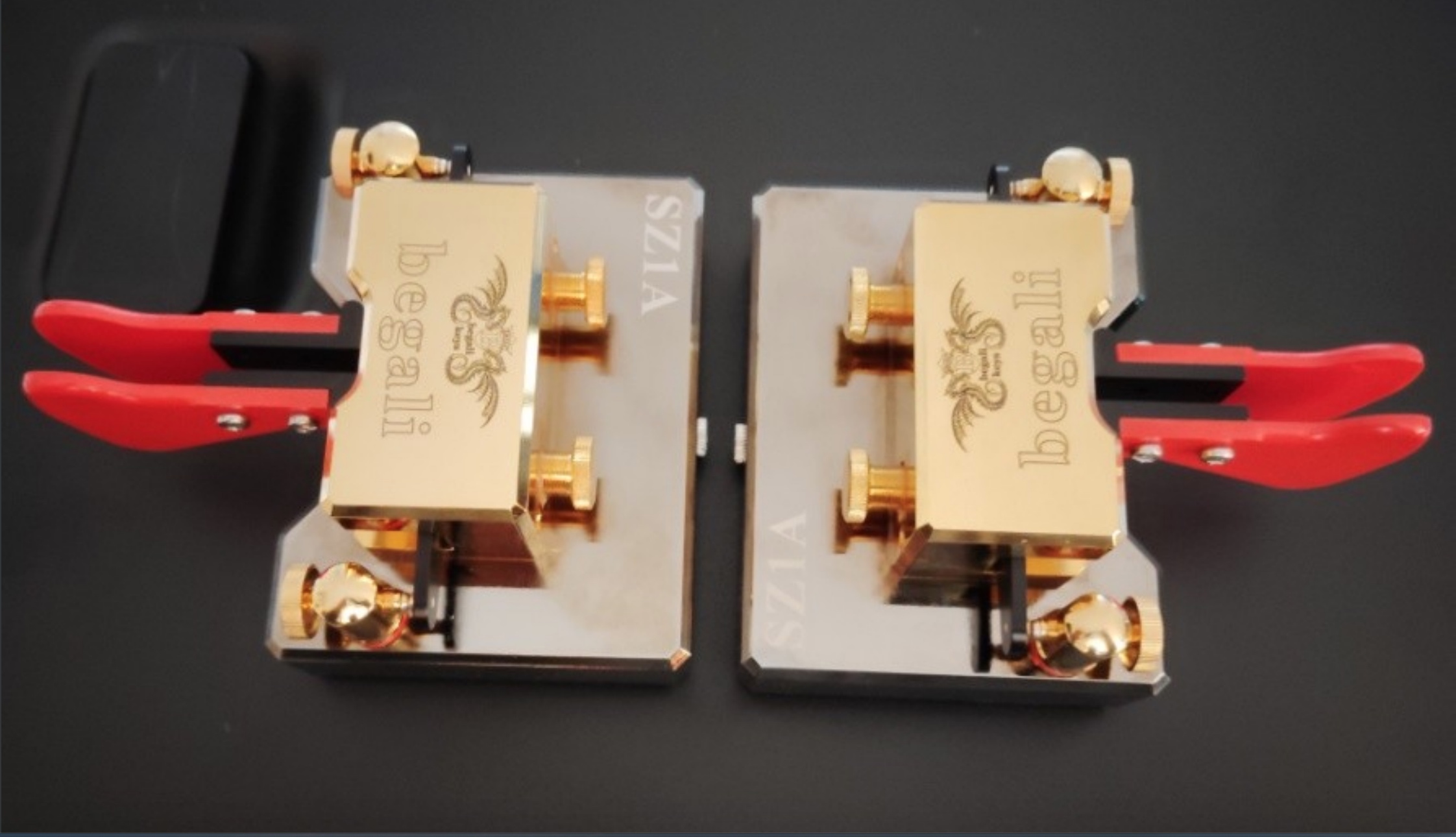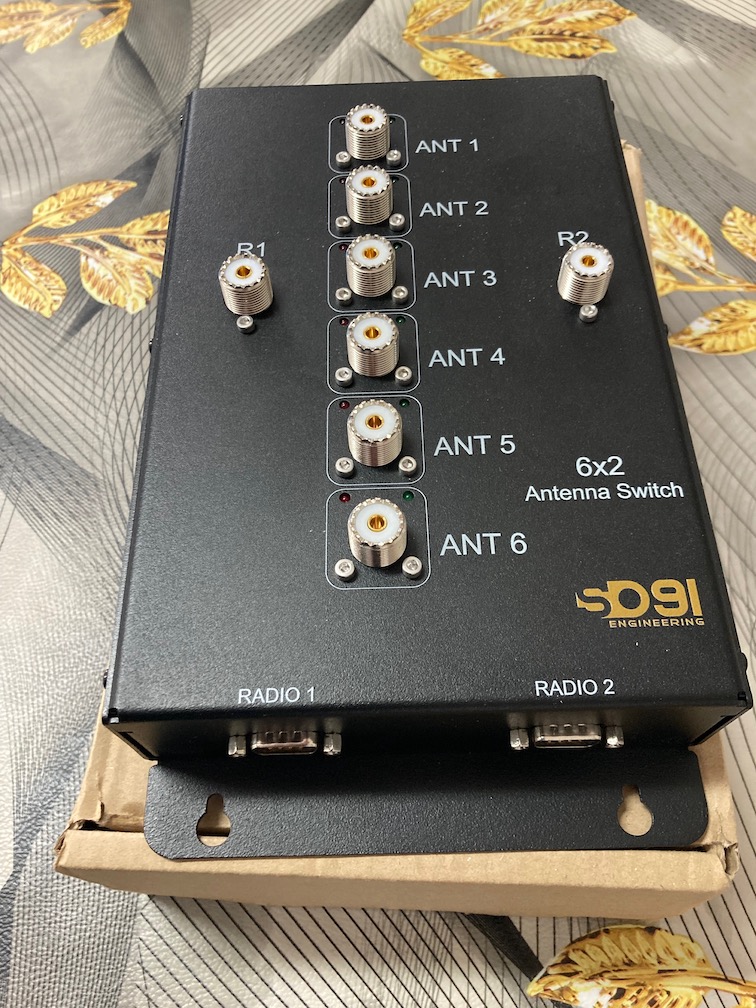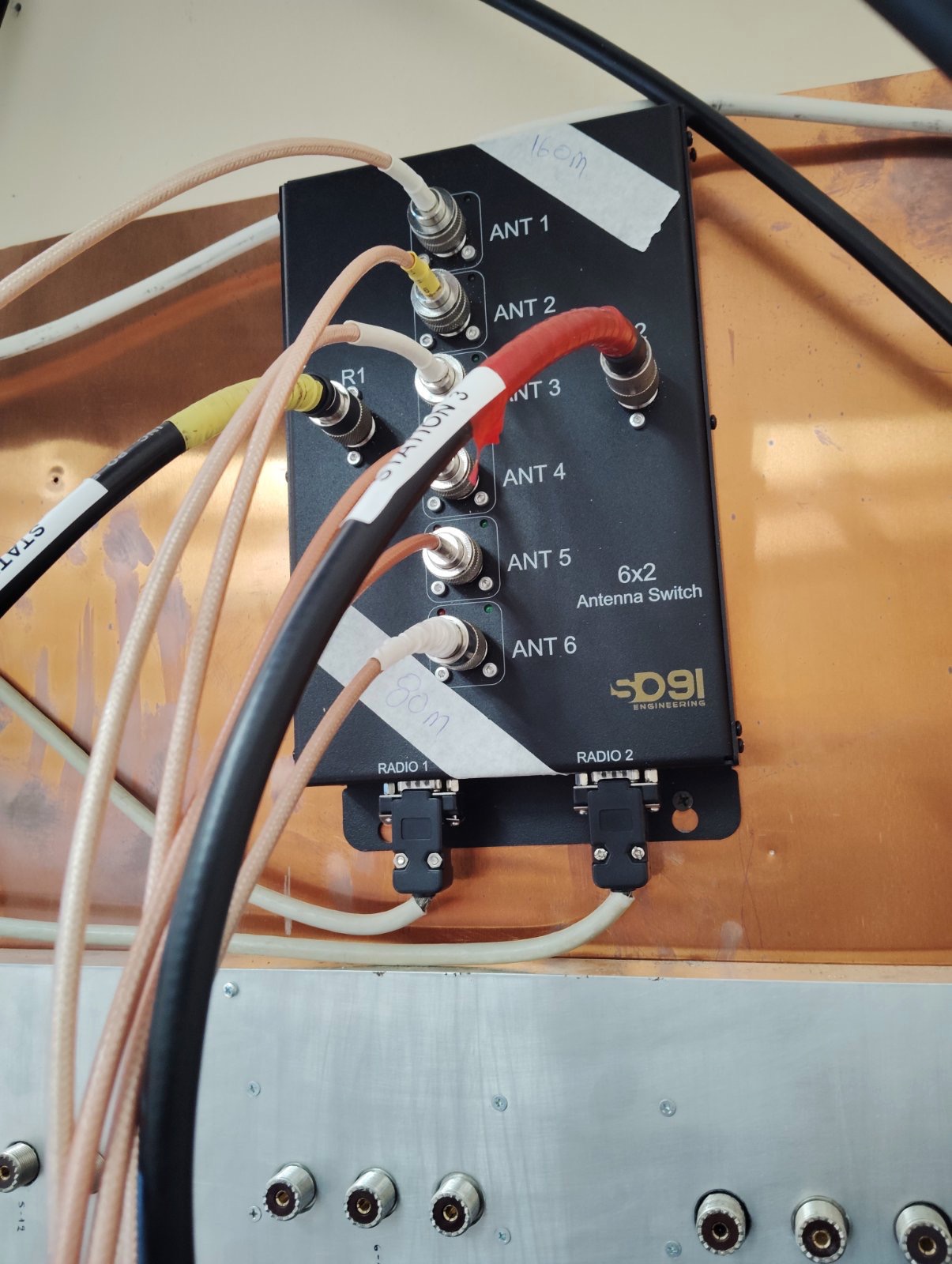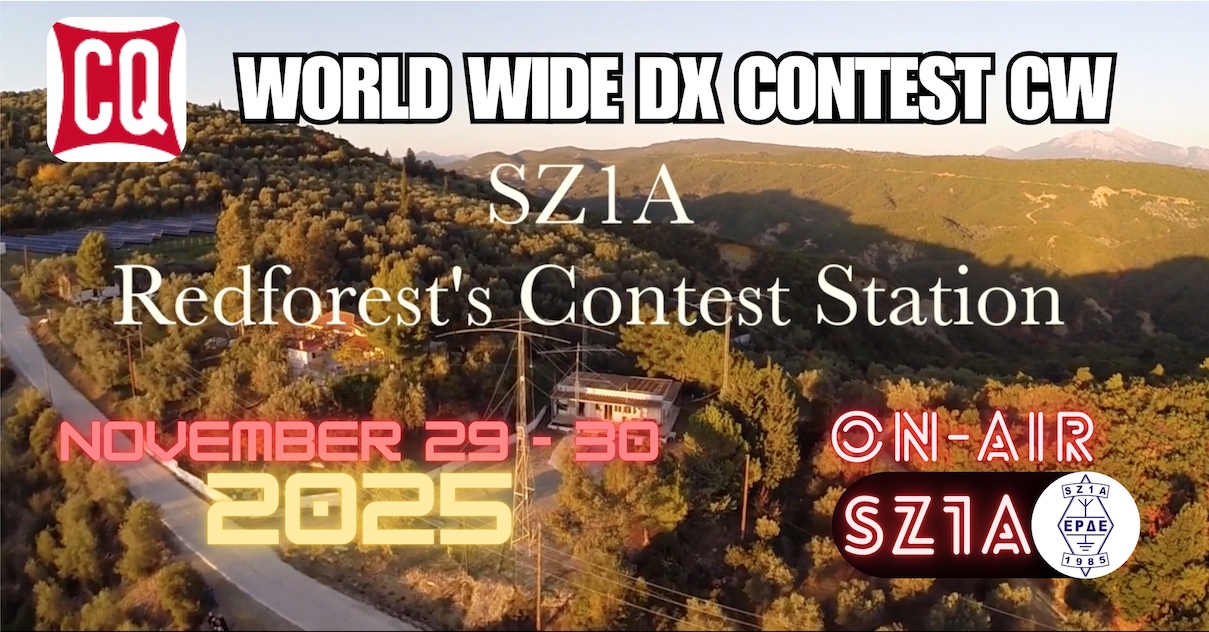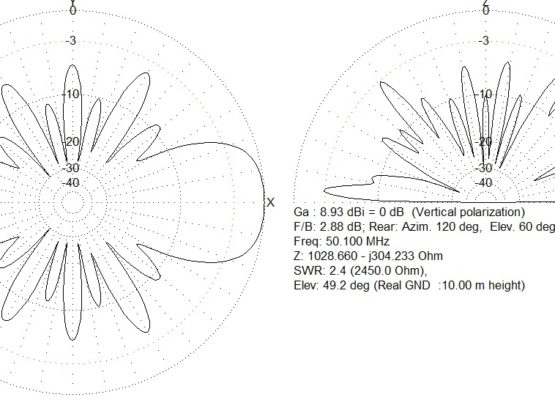
CQ World Wide DX Contest CW 2025
| Dates & Time: | 00:00 UTC, November 29 (Saturday) – 23:59 UTC, November 30 (Sunday), 2025 |
| Exchange: | RST report (599) and CQ Zone |
| Bands: | 160, 80, 40, 20, 15, 10 meters |
| Objective: | The objective is simple. Work as many countries and zones as you can |
| Official Rules: | https://cqww.com/rules.htm |
| Log Upload: | https://cqww.com/logcheck/ |
Every year, the CQ World Wide DX Contest turns the HF bands into one huge shared playground. Two weekends, two modes, one global objective. SSB in October, CW in November. Together they form the biggest DX event in amateur radio.
In our SSB announcement, we walked through the wider contest story, scoring basics, and why CQ WW still sets the standard. If you want the full background and SSB perspective, you can read our previous post.
This article focuses on the CW weekend. What makes it different. How last year went. How to take part in 2025. And how SZ1A plans to operate.
CQ WW is simple to enter and very deep to master.
How to take part
- Operate on the HF bands from 160 to 10 meters, excluding 60, 30, 17 & 12 meters (WARC bands).
- Call “CQ TEST” or answer others.
- Exchange RST (599) and your CQ Zone.
- Log as many QSOs, countries, and zones as you can.
- After the contest, upload your log in Cabrillo format at cqww.com.
Propagation sets the rhythm. Ten and fifteen meters are daytime workhorses when the solar cycle cooperates. Twenty meters carries both day and night. Forty, eighty, and one sixty come alive after dark, especially around sunrise and sunset.
How scoring works
- QSO points depend on country and continent.
- Same continent, different country is usually worth fewer points.
- Intercontinental QSOs count for the most points.
- Multipliers are CQ Zones and DXCC entities, once per band.
- Final score equals total QSO points multiplied by total multipliers.
The result is a contest that rewards both rate and strategy. Runs build QSO volume. Low band work and smart multiplier hunting push the score into serious territory.
Rule updates for 2025
The main 2025 changes follow the SSB weekend:
- The Explorer category is gone. It is replaced by Multi Operator Distributed, similar to the CQ WPX structure.
- The top five single operator entrants, assisted and unassisted, must provide audio recordings on request.
- The committee may ask for a station layout description, including antennas, switching, and interlocks.
Always confirm details on the official rules page before the contest.
Exchange: RST report (599) and your CQ Zone
Bands: 160, 80, 40, 20, 15, and 10 meters
Goal: Work as many countries and zones as you can on each band
Tips: Keep your operating disciplined and your logging accurate. Follow daylight on 10, 15, and 20 meters, then as the bands close, move to 40, 80, and 160 at night while watching for sunrise and sunset DX.
Log Upload: https://cqww.com/logcheck/
Official rules: https://cqww.com/rules.htm
Why CW Weekend Matters
CW is narrow. That is its technical strength. A CW signal occupies far less bandwidth than an SSB signal. This means the same power can reach farther under identical conditions. In a worldwide DX contest this can turn weak paths into confirmed multipliers. When the band is crowded or noisy, CW still cuts through and reaches distant regions that SSB cannot.
This also means that far more stations can operate in the same spectrum space. On crowded bands like 40 meters during a major contest, SSB can become chaotic as operators try to squeeze into a very limited segment. CW avoids this. Five or more CW signals can fit into the bandwidth of a single SSB signal. This creates more room to run, lowers QRM, and keeps the band more usable during peak activity.
CW also benefits from the worldwide Reverse Beacon Network (RBN). Thousands of skimmers monitor CW activity across the bands. When a station calls CQ, the skimmers decode the call and spot it automatically on the RBN and on DX clusters. This rapid and automatic visibility brings callers from every continent within seconds. SSB does not enjoy this level of assistance. On SSB, spotting is manual and far less consistent.
For DXers, CW offers advantages that has defined serious DX hunting for decades.
It is common to achieve a full DXCC in a single CQ WW CW weekend, and many operators have even completed their 5 Band DXCC during this event with careful band planning and a bit of persistence. That is the beauty of this contest and this mode together. A true DX contest paired with a mode that enables fast, reliable long-distance contacts, concentrated into one weekend when the entire world is on the air. A true “DXer’s delight”.
CW is also easier on the operator over many hours. You do not need to speak.
Many contesters prefer it because it reduces fatigue and supports steady operating through a full 48 hour weekend. It helps maintain focus and makes long shifts more manageable.
CW has a sound that operators love. It has rhythm, timing, and personality. Every operator has a slightly different style. The bands fill with short notes and pauses that merge into a living pattern across the HF spectrum.
That musical quality is part of what makes the CW weekend unique.
What 2024 Taught Us on CW
The 2024 CQ WW CW results confirm why this weekend is so important.
- In 1948, the first CQ WW CW had just 559 entries. In 2024, there were 8,313 logs and 5,409,004 QSOs recorded.
- Two hundred and seven DX entities appeared in the logs, which shows how global participation has become.
- The world single operator all band high power winner, D4DX operated by Braco E77DX, claimed over 20.2 million points (a new world record), with V47T operated by Andy N2NT close behind at 15.9 million.
- Multi operator scores stayed impressive. CN3A led Multi Multi with 47.5 million points, while CR3A topped Multi Two with 39.3 million. TK0C won Multi Single high power with 20.0 million.
- The top hourly rates on CW remain astonishing. CR6K reached 394 QSOs in a single hour. V26K managed 332 per hour with low power. Even QRP entries like 4O4A achieved 144 QSOs in one hour.
- Low power dominated participation. Across all continents, 55 percent of single operator entries were low power, 41 percent high power, and 4 percent QRP. In Europe, low power entries outnumbered high power by almost two to one.
- Youth categories also grew. KC1TNO operating as a high power rookie produced a score of 3.75 million points in 2024. That is a strong sign that younger operators are not just joining but competing seriously.
Another important point from the 2024 report is signal quality. The contest director highlighted an increasing number of wide and dirty signals and warned that future enforcement will be stricter, using global SDR recordings to verify behaviour. Clean signals and proper sportsmanship are not optional anymore.
All this gives context for 2025. Participation is high, expectations are high, and the technical bar is rising.
What To Expect This Year
Propagation on the high bands remains strong with Cycle 25 at its peak. Ten and fifteen meters should deliver long openings toward North America, South America, and Asia. Twenty meters will remain the workhorse band, supporting both daylight and nighttime paths. Forty and eighty meters will carry much of the night effort. Sunrise and sunset will be prime times for long path and greyline surprises.
At the absolute top level, many operators are watching what has been called a new “Clash of Titans.”
In a recent Q5 Worldwide episode, Jose CT1BOH analysed a likely showdown between Dan N6MJ at EF8R in the Canary Islands, Chris KL9A at CQ9A in Madeira, and Braco E77DX at HK1T in Colombia.
The discussion covered 2BSIQ techniques, path geometry, sunrise timing, and the location advantages that matter at this level.
For most operators, the lesson is clear. Station engineering, operator discipline, and accurate logging shape your final score. At the very top, geography becomes the deciding edge. Location defines propagation, sunrise and sunset timing, and the number of workable multipliers. It is a fundamental part of the competitive landscape in CQ WW.
Greece on the Air
Greek stations will once again appear across the bands. From single operator efforts with wire antennas to organized multi operator teams, activity should be strong in every category.
High band openings will offer excellent chances for smaller Greek stations to work rare DX.
Low bands will reward patient operating and clean signals.
As always, the Greek amateur radio community adds energy and local expertise to the weekend. If you tune the bands, you will hear Greece active from 160 to 10 meters.
The SZ1A Contest Station
The SZ1A Red Forest Contest Station has become a reference point for serious contest operations in Greece. It is a place where engineering, operating skill, and teamwork come together in a practical way. The station sits in rural western Greece, in the mountains, away from noise, and with just enough space for proper antennas on all HF bands. Every part of the site has been built, repaired, or improved by volunteers who treat contesting as both a craft and a technical challenge.
For CW contests in particular, SZ1A has evolved into a training environment where operators refine timing, accuracy, and efficiency. From antenna switching to interlock logic to filtering and receive paths, almost everything at the station has been measured, optimized, and tested under real contest conditions. The result is a setup built for stability and long operating hours, which is exactly what the CW weekend demands.
CQ WW SSB opened our two part plan for this contest season and brought us another step closer to our long term goal of breaking into the European Top Ten.
We will see the final SSB outcome once log checking is complete, but the direction is clear. We are moving upward year after year.
CQ WW CW now challenges the same station and much of the same core team in a different way, giving us another chance to push that progress forward.
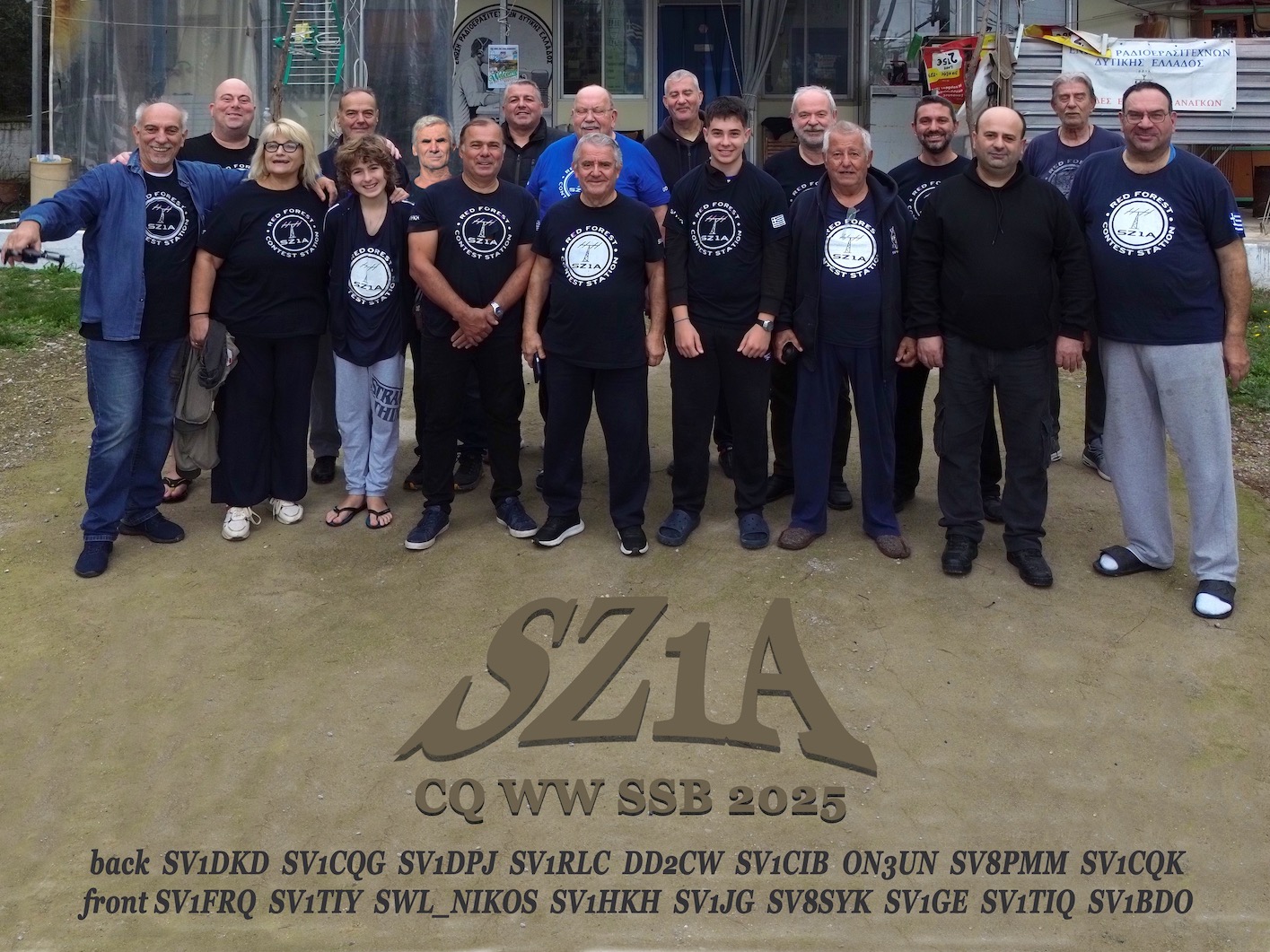
SZ1A in CQ WW and Our Long-Term Goal
At SZ1A we approach CQ WW as a long-term project. The objective is clear and simple. Become a station that finishes inside the European Top-Ten every year in our category, in both SSB and CW. We are not there yet, but the trend is unmistakable.
In CW, our results since 2019 show a clear pattern. We lead nationally every year in our category, and our European ranking moves upward step by step.
In 2024 we set a new Greece record with 8,052,528 points, finishing first in Greece, thirtieth in Europe, and forty-fourth in the world.
In 2023 we again ranked first in Greece and reached twenty-sixth place in Europe. In 2022 we were first in Greece and twenty-ninth in Europe.
The earlier years show the same trend. Stable national wins, mid thirties in Europe, and a steady climb toward the top.
SSB tells a similar story. Since 2019 we have finished first in Greece in every entry of our category except one second place in 2021. In 2024 our Multi Two effort reached 8,274,837 points and placed us first in Greece, fourteenth in Europe, and twenty-eighth worldwide. The years before that show the same gradual rise. From the mid thirties in Europe a few years ago to the low twenties and teens today.
These results confirm two things. First, SZ1A is now stable at the top of Greece in both modes. Second, our European placement is rising year after year. The next major target is clear. Break into the European top ten and stay there.
CQ WW CW 2025 is another step toward that goal.
What Changed Since SSB Weekend
The period between the SSB and CW weekends brought several important developments for SZ1A, both technically and operationally.
CQ WW SSB itself ran without problems from the station side. We entered Multi Two High Power and kept our claimed score visible on the live scoreboard (#onlinescores) throughout the contest. For most of the event we remained inside the European Top Ten on the live board.
When raw scores appeared later we were first in Greece, thirteenth in Europe, and thirty first worldwide.
Conditions were not ideal, but the station architecture held steady, which is vital when the same hardware must support another major contest so soon after.
The real highlight of the SSB weekend was our young operators.
Taxiarhis SV8SYK at sixteen and Nikolas at fourteen were the clear protagonists. Taxiarhis delivered long, clean runs with impressive consistency and made more QSOs than anyone else on the team. It was his first time operating from a large contest station, and he used every minute. Nikolas, after a month of preparation, experienced his first pileups and worked all six continents. Their enthusiasm reminded everyone why we build and maintain a multi operator environment in the first place.
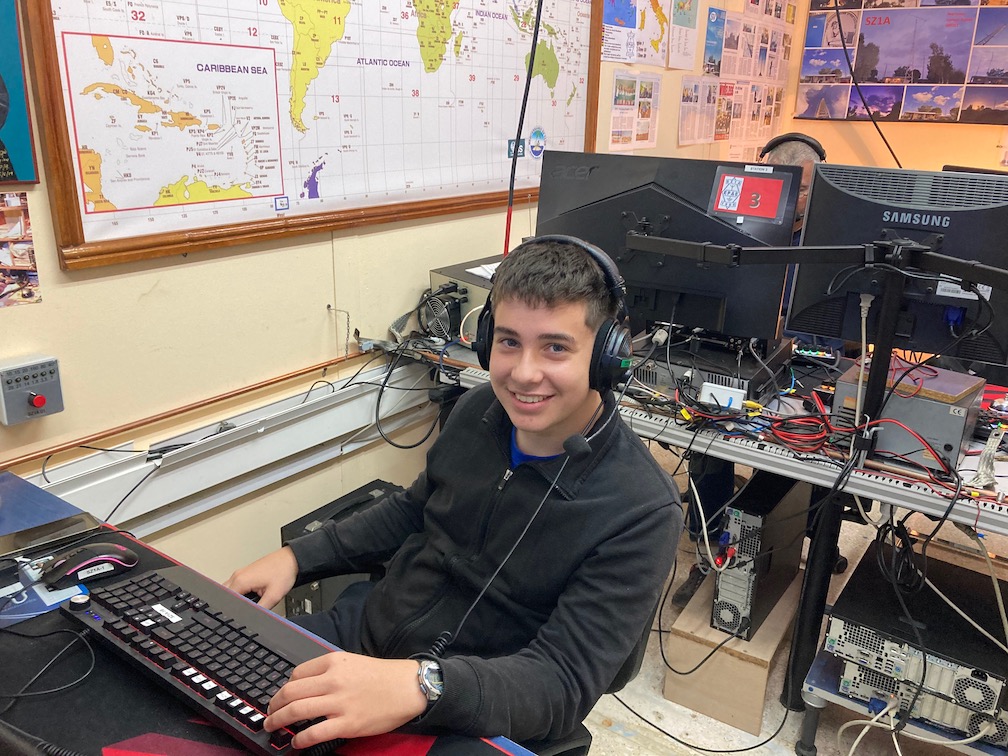
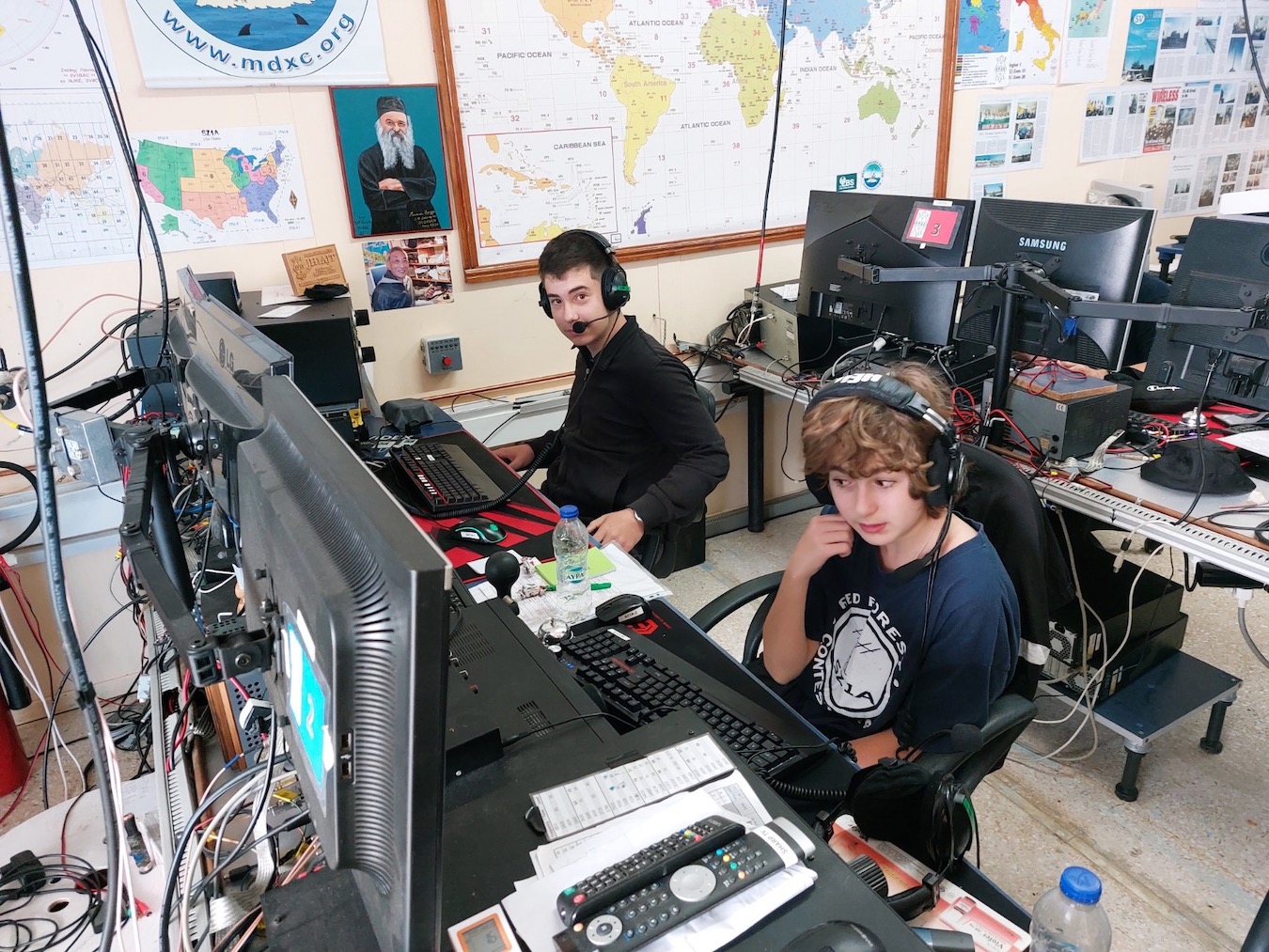
Right after SSB came further good news. On 1 November, the final results of the Makrothen RTTY Contest 2025 were released. SZ1A, operated by SV1DPJ, SV1BDO, and SV1DPI in Multi Operator High Power, finished first in the world. This result gave the team a strong lift heading into the CW weekend.
Technically, the main change between SSB and CW is the installation of a new 6×2 Antenna Switch from SO9I Engineering. The switch was first tested on site with our NanoVNA, and the measurements matched the excellent specifications provided by the manufacturer. It has now been integrated into our MOAS II RF switching architecture, replacing the older 6×2 unit based on the SJ2W board, which was removed for service.
The new switch offers clearly lower insertion loss and significantly higher isolation. Lower loss improves both transmitted and received signals on every band. Higher isolation reduces interstation interference, which is especially important in a multi-operator multi-station environment. In practice, this upgrade should improve signals, reduce RF noise between stations, and give operators cleaner reception.
During the same period we also investigated a minor network issue that appeared on Station 1 during CQ WW SSB. Early checks point to a configuration detail inside DXLog, but investigations continue.
Outside contest preparation, our application for a new antenna installation site at the nearby water tank was officially approved by the local authority. The location offers roughly 100 meters of additional elevation and a clear 360 degree horizon, creating valuable potential for future antenna development. It does not affect CQ WW CW directly, but it is an important step toward our long term infrastructure goals.
These are the developments that bring us from the SSB weekend to the CW part of CQ WW. One world first in RTTY, one important RF upgrade, strong contributions from young operators, and steady progress toward our European goals.
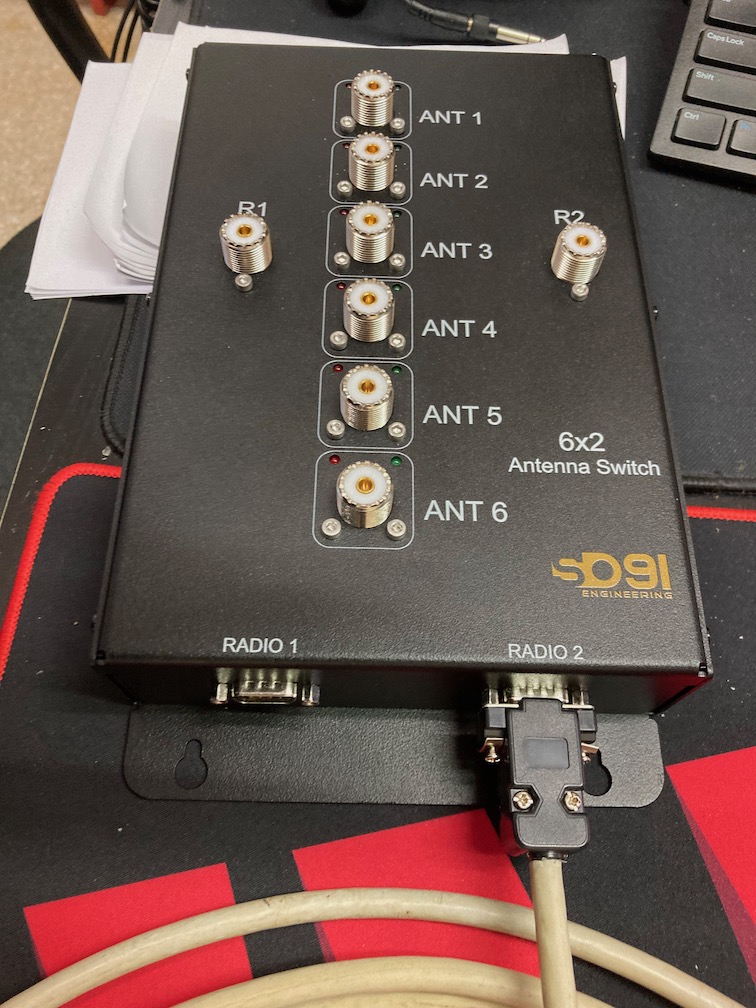
Our Plan for CQ WW DX CW 2025
Callsign: SZ1A
CQ Zone: 20
Category: Multi-Two
For CQ WW CW 2025 we plan to compete in the Multi Two category, one of the most active and challenging classes. Two main stations will run across the major bands, supported by an inband and multiplier position that chases QSOs and band maps, tracks openings, and catches new countries and zones without disrupting the main runs.
Ten and fifteen meters will be the primary daytime bands. Twenty meters will support both day and night traffic.
Forty and eighty meters will carry the overnight load, with greyline periods expected to deliver key multipliers.
Coordination between run operators, inband, and multiplier positions is essential to maintaining clean rhythm and high accuracy.
Consistency and discipline remain the core goals. High scores are built one clean QSO at a time, and CW offers little room for sloppy exchanges. The new antenna switch, stable hardware, and trained operators together support that focus.
The SZ1A CQ World Wide DX CW Contest Team 2025
(in alphabetical order by callsign)
Operators
- SV1JG – Cliff
- SV1BJW – Vasilis
- SV1CDN – Dennis
- SV1CIB – Dimitris
- SV1DAY – Manos
- SV1DKD – Andy
- SV1DPJ – Vasilis (Team Leader)
- SV1FWV – Takis
- SV1PMQ – Giannis
- SV1SYM – Teo
- SV8SXF – Kostas
Support Crew
- SV1CQG – Kostas
- SV1CQK – Thanasis
- SV1DPI – Kostas
- SV1RLC – Thanasis
- SV1RRX – Sotiris
- SV1TBW – Dimitris (Our Broadcast Engineer)
- SV1TIQ – Sotiris
- and a special thanks to Panos – SV1HKH for providing his house for additional sleeping quarters
Each operator brings different strengths. Some drive high rate runs with precision and endurance. Others focus on multipliers, timing their moves to empty the band map when it matters most. Together they form a balanced and disciplined team capable of sustaining a full forty eight hour effort.
The support team keeps the entire operation alive. They handle logistics, food, transport, and technical backup. They solve problems before the operators even notice them. Without them the radios would stay quiet.
Together they turn a station into a team and a contest into a shared effort. They are the foundation behind every QSO we make.
New to Working Us?
Working us in the contest is simple.
- Find SZ1A calling CQ.
- Answer once with your full callsign.
- We send 599 and Zone 20.
- You send 599 and your CQ Zone.
- Log the QSO and move on to the next one.
You can work us once per band. Try to find us on as many bands as your station and conditions allow. If we ask for a repeat, please stay patient. CW QRM can be heavy at peak times.
We regularly train newer operators at SZ1A. Some are still building their CW contest confidence. Your patience and clear sending help them improve.
If you can, please spot us on the cluster after our QSO. It helps others find us quickly and supports our rate across the weekend.
Finally, remember to submit your log, even if it is small. Every log improves cross checking and makes the final results more accurate.
A Few CW Notes Before the Weekend
- Use narrow filters. CW contests are dense. Narrow filters reduce fatigue and help you separate callers inside heavy QRM. Even simple receivers benefit from tightening the passband. Most top operators work between 150 (or less) and 300 Hz.
- Keep your sending clean. Timing matters more than speed in CW. A steady, consistent rhythm prevents copying errors and keeps both sides of the QSO accurate.
- Let RBN help you. The Reverse Beacon Network gives instant feedback on where your signal is being heard. It is a useful tool for understanding openings and adjusting your strategy during the weekend.
These three tips apply to every operator in the contest, from small home stations to top tier multi ops.
Join the Weekend
CQ WW CW comes once a year. Even a few hours on the air will teach you something. You will hear how bands change with time and direction. You will experience how CW cuts through noise and how a clean exchange saves time in a pileup.
If you work us, try us again on another band. If you are new, start with the band that sounds most open at your local time and call a few stations. Watch how quickly your log grows.
Good luck to everyone in CQ WW DX CW 2025. From all of us at SZ1A, we hope you enjoy the sound of HF at full speed and the unique rhythm of CW across the bands.
See you in the pileups.
73 ES GL TO ALL IN TEST DE SZ1A
Optional reading for more insight:
For a deeper background on CQ WW, scoring, and the SSB side of the story, you can revisit our SSB article.


